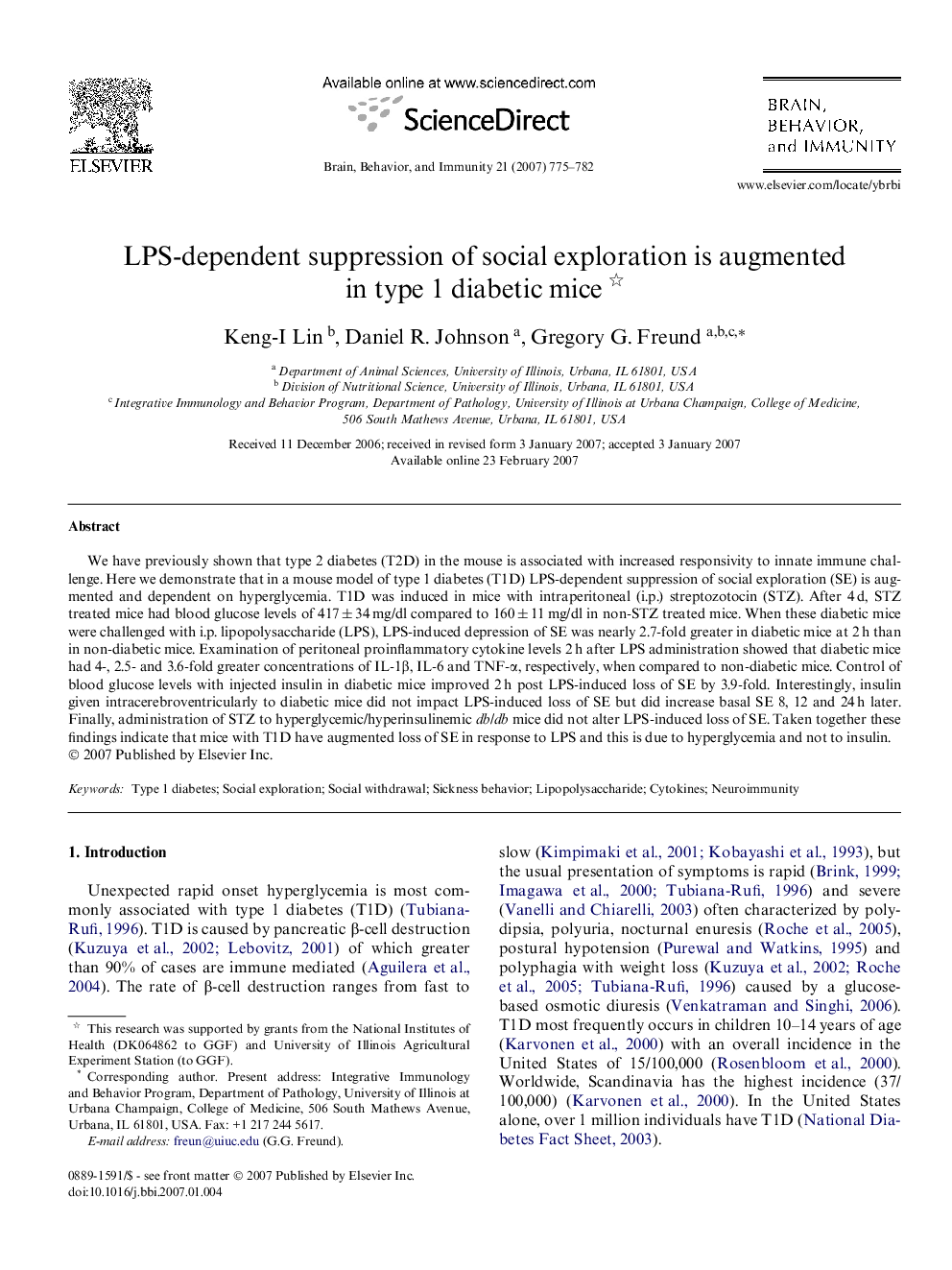| کد مقاله | کد نشریه | سال انتشار | مقاله انگلیسی | نسخه تمام متن |
|---|---|---|---|---|
| 923266 | 921077 | 2007 | 8 صفحه PDF | دانلود رایگان |

We have previously shown that type 2 diabetes (T2D) in the mouse is associated with increased responsivity to innate immune challenge. Here we demonstrate that in a mouse model of type 1 diabetes (T1D) LPS-dependent suppression of social exploration (SE) is augmented and dependent on hyperglycemia. T1D was induced in mice with intraperitoneal (i.p.) streptozotocin (STZ). After 4 d, STZ treated mice had blood glucose levels of 417 ± 34 mg/dl compared to 160 ± 11 mg/dl in non-STZ treated mice. When these diabetic mice were challenged with i.p. lipopolysaccharide (LPS), LPS-induced depression of SE was nearly 2.7-fold greater in diabetic mice at 2 h than in non-diabetic mice. Examination of peritoneal proinflammatory cytokine levels 2 h after LPS administration showed that diabetic mice had 4-, 2.5- and 3.6-fold greater concentrations of IL-1β, IL-6 and TNF-α, respectively, when compared to non-diabetic mice. Control of blood glucose levels with injected insulin in diabetic mice improved 2 h post LPS-induced loss of SE by 3.9-fold. Interestingly, insulin given intracerebroventricularly to diabetic mice did not impact LPS-induced loss of SE but did increase basal SE 8, 12 and 24 h later. Finally, administration of STZ to hyperglycemic/hyperinsulinemic db/db mice did not alter LPS-induced loss of SE. Taken together these findings indicate that mice with T1D have augmented loss of SE in response to LPS and this is due to hyperglycemia and not to insulin.
Journal: Brain, Behavior, and Immunity - Volume 21, Issue 6, August 2007, Pages 775–782